47 start with J start with J
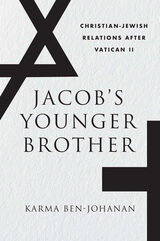
A Seminary Co-op Notable Book
“An astute and evenhanded study of how both faiths view themselves and each other.”
—Publishers Weekly
“An illuminating and important new book…An intellectual, cultural, and political challenge…[F]or anyone for whom the Jewish-Christian story is an important element in defining his or her identity.”
—Israel Jacob Yuval, Haaretz
“An extraordinarily sophisticated, insightful and provocative examination of how Roman Catholics and Orthodox Jews addressed the prospect of reconciliation in the second half of the twentieth century.”
—Glenn C. Altschuler, Jerusalem Post
“A volume from which both Jewish and Catholic scholars may learn…This is an excellent book.”
—Eugene J. Fisher, Catholic News Service
A new chapter in Jewish-Christian relations opened in the second half of the twentieth century when the Second Vatican Council exonerated Jews from the accusation of deicide and declared that the Jewish people had never been rejected by God. In a few carefully phrased statements, two millennia of deep hostility were swept into the trash heap of history.
But old animosities die hard. While Catholic and Jewish leaders publicly promoted interfaith dialogue, doubts remained behind closed doors. Drawing on extensive research in contemporary rabbinical literature, Karma Ben-Johanan shows that Jewish leaders welcomed the Catholic condemnation of antisemitism but were less enthusiastic about the Church’s sudden urge to claim their friendship. Catholic theologians hoped Vatican II would turn the page on an embarrassing history, while Orthodox rabbis, in contrast, believed they were finally free to say what they thought of Christianity.
Jacob’s Younger Brother pulls back the veil of interfaith dialogue to reveal how Orthodox rabbis and Catholic leaders spoke about each other when outsiders were not in the room. There Ben-Johanan finds Jews reluctant to accept the latest whims of a Church that had unilaterally dictated the terms of Jewish-Christian relations for centuries.
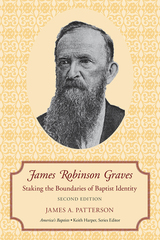
James A. Patterson’s groundbreaking study of the life and mind of James Robinson Graves explores the history of Landmarkism in the nineteenth century. Under this doctrine, Graves proposed that “true” Baptists should be able to trace their lineage directly to the early church, rather than through the strands of Protestantism. Controversial in its day, and often poorly understood now, Landmarkism, in Patterson’s nuanced interpretation, is important for understanding an essential feature of Baptist life to the present day: how do Baptists stake out their identities in reference to other Baptists and to members of competing denominations? While Graves has been widely dismissed by recent historians, in Patterson’s skillful revision, this figure draws much nearer to central concerns of Baptist thinking since the First Great Awakening.
This addition to the America’s Baptists series blends biographical insight with a thematic approach that focuses primarily on Graves’s controversial beliefs about ecclesiology, Baptist history, and eschatology. Patterson divides this work into seven chapters that progress chronologically, and this updated edition includes an expanded discussion of Christian republicanism, elaborates on the question of Graves and race, and features a longer epilogue to account for recent scholarship on Graves and Landmarkism.
James Robinson Graves is an accessible introduction to the significant albeit disputed role that the Landmark tradition played in the shaping of Southern Baptist life and thought. Seminary students and scholars of nineteenth-century Southern Baptist history will find a rich new interpretation of this misunderstood figure.
JAMES A. PATTERSON holds a PhD in American church history from Princeton Theological Seminary. He is emeritus university professor of theological studies at Union University. He is the author of Shining Lights: A History of the Council for Christian Colleges & Universities and To All the World: A History of Mid-America Baptist Theological Seminary, 1972–1997.

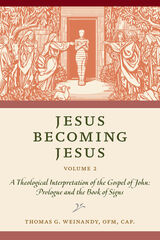
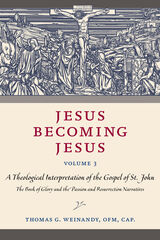
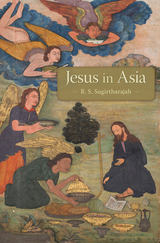
Reconstructions of Jesus occurred in Asia long before the Western search for the historical Jesus began in earnest. This enterprise sprang up in seventh-century China and seventeenth-century India, encouraged by the patronage and openness of the Chinese and Indian imperial courts. While the Western quest was largely a Protestant preoccupation, in Asia the search was marked by its diversity: participants included Hindus, Jains, Muslims, Catholics, and members of the Church of the East.
During the age of European colonialism, Jesus was first seen by many Asians as a tribal god of the farangis, or white Europeans. But as his story circulated, Asians remade Jesus, at times appreciatively and at other times critically. R. S. Sugirtharajah demonstrates how Buddhist and Taoist thought, combined with Christian insights, led to the creation of the Chinese Jesus Sutras of late antiquity, and explains the importance of a biography of Jesus composed in the sixteenth-century court of the Mughal emperor Akbar. He also brings to the fore the reconstructions of Jesus during the Chinese Taiping revolution, the Korean Minjung uprising, and the Indian and Sri Lankan anti-colonial movements.
In Jesus in Asia, Sugirtharajah situates the historical Jesus beyond the narrow confines of the West and offers an eye-opening new chapter in the story of global Christianity.
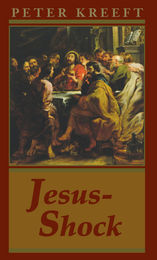
Jesus Shock is the second in a series of short works on seminal concerns of the impact that Jesus Christ made in the world. The first work, The Philosophy of Jesus (St. Augustine’s Press, 2007), explored philosophy in light of Jesus, rather than the other way around. The present work investigates the reception Jesus received both in His lifetime and continuously to the present time, not only from His enemies, but from His friends, a reception of shock, astonishment, even disgust.
Perhaps a few remarks from the book best explains it:
The point of the book:
The point of the title: Imagine a storm has downed a telephone wire so that everyone who touches it is shocked in every cell of his body. Well, the storm of God’s crazy love has “downed” (incarnated) Jesus, and everyone who touches this “live wire” is shocked in every cell of his soul.
The question of the book: Why is “Jesus” the most non-neutral, the most controversial, the most embarrassing name in the world? Why is talking about Jesus like talking about sex?
This whole book is really about a single movie line, the greatest line in the greatest movie in history. Bet you know what it is.
Jesus-Shock is about the Real Presence of Christ in the Gospels and in the Eucharist. It
is not about the theology of the Real Presence, but about the experience of Him there, and about the experience of everyone in the Gospels who met Him.
What was the bitterest controversy of the Protestant Reformation, both between Protestants and Catholics and between different Protestant denominations, the one that had both sides calling the other not just heretics but devils?
Answer: It was not Justification by Faith, the hallmark of the Reformation, even though that question is about nothing less momentous than how to be saved, how to get to Heaven. It was not the relation between religion and politics, even though that was a matter of life or death (literally, on battlefields and at guillotines and hangings) and not just a matter of truth or falsity, or of good or evil. It was not about the sufficiency of the Bible, or the corruption in the Church, or the relation between the Bible and the Church. It was not about the Pope, and the governance of the Church. It was not about Mary or saints or angels or Purgatory. It was not about the Incarnation or the Trinity or the Atonement.
It was about the Real Presence of Christ in the Eucharist.
Jesus-Shock, in addressing this controversy forcefully and faithfully, shows the reasons why to this day the name of “Jesus” stirs up controversy, even revulsion, in polite society. In the true spirit of ecumenism, it also points the way toward a true rapprochement among His modern-day disciples.
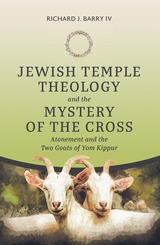


John Cuthbert Ford, SJ (1902-1989) was one of the leading American Catholic moralists of the 20th century. This is the first full-length analysis of his work and influence, one that not only reveals a traditionally Catholic method of moral analysis but also illuminates the conflicts behind and development of Catholic moral teaching during the volatile 1960s.
Ford is best known for his influential contribution to Catholic teachings on three moral issues. His objection to the Allied practice of obliteration bombing during WWII by drawing a sharp distinction between combatants and noncombatants is still studied widely today. Ford campaigned for alcohol education for both clergy and laity and introduced a pastoral approach for assisting and counseling alcoholics. As a member of the Papal Commission on Population, Family, and Birth Rate during the 1960s, Ford was an unyielding defender of the traditional Catholic teaching on birth control that still reigns today.
Drawing on the published works and personal papers of Ford, Eric Genilo begins with a brief description of the theologian's life, career, and influence. The book is divided into two parts. In Part I, Method, Genilo offers an overview of Ford's moral theology in the "manualist" tradition—a 300-year period during which Catholic priests used manuals to instruct the faithful on matters of morality and sin. Genilo then examines Ford's two modes of resolving moral cases and presents Ford's approach to doctrinal development. In Part II, Moral Objectivity, Genilo shows how Ford confronted the growing situation ethics movement, then moves to how he understood freedom and subjective culpability, particularly in the case of alcoholism. Later chapters reveal Ford's theological conflicts with Josef Fuchs, SJ on the issue of birth control, his staunch opposition to totalitarianism, and his moral analysis of how society should treat marginalized persons threatened by the abuse of power.
Genilo concludes with an assessment of Ford's legacy to the development and practice of moral theology, leaving the reader with an in-depth portrait of an extraordinary man who dedicated his life to defending the Church and protecting the most vulnerable persons in society.
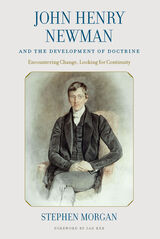


It was by far the most controversial document to emerge from Vatican II — Dignitatis Humanae, or the Declaration on Religious Freedom. Drafted largely by prominent Jesuit theologian John Courtney Murray, it represented a departure from previous Catholic teachings in that it acknowledged and accepted as normative the separation between Church and State and declared religious freedom a fundamental human right. In doing this, it set forth guidelines for the role of the Catholic Church in secular liberal and pluralistic societies.
Nearly four decades later, Hermínio Rico examines the continued relevance of this declaration in today's world, compares its most paradigmatic interpretations, and proposes a reconsideration of its import for contemporary church-society relationships. He offers a detailed analysis of how Pope John Paul II has appropriated, interpreted, and developed the main themes of the document, and how he has applied them to such contentious modern issues as the fall of Communism and the rise of secular pluralism. In addition, Rico sets forth his own vision of the future of Dignitatis Humanae, and how the profound themes of the declaration can be applied in years to come to help the church find a way to engage effectively with, and within, pluralistic societies.
Of interest to students of Catholic thought, church-society relationships, the legacy of John Courtney Murray, and the teachings of John Paul II, this book offers a fresh perspective on one of the most important documents in the modern history of the Catholic church.

Appointed by Pope John XXIII to the Pontifical Commission on Population, Family, and Birth, Fuchs ultimately found himself disappointed in his three years of service and spent the next thirty years exploring a broad array of issues pivotal to a reconstruction of Roman Catholic natural law theory. This is the first full-length analysis of Fuchs's efforts.
Beginning historically by looking at Fuchs's writings and beliefs before the Pontifical Commission appointment, including his defense of natural law during the "situation ethics" debates of the 50s and 60s, the concept of personal salvation, and the status of "nature" and "human nature," Graham moves to the intellectual conversion that inspired Fuchs to reconsider his concepts following the commission appointment. From there, Graham engages in a sustained critique of Fuchs's natural theory, addressing both the strengths and weaknesses to be found there and suggest possible avenues of development that would make a positive contribution to the ongoing quest to rehabilitate the Roman Catholic natural law theory that continues to dominate the landscape of moral theology today.

Formerly known as The Annual of the Society of Christian Ethics, it will now bear the official title: The Journal of the Society of Christian Ethics. Instead of appearing as an annual, the Journal will begin appearing twice a year in 2003—in the spring and in the fall. The Journal will continue to be an essential resource for students and faculty pursuing the latest developments in Christian and religious ethics, publishing refereed scholarly articles as well as a professional resources section on teaching and scholarship in ethics—a preeminent source for further research.

Formerly known as the Annual of the Society of Christian Ethics, this is the second volume of the first year of appearing biannually in its new incarnation and an essential resource for students and faculty pursuing the latest developments in Christian and religious ethics.

The Journal of the Society of Christian Ethics continues to be an essential resource for students, faculty, and scholars in search of the latest developments, thinking, and issues in the world of Christian and religious ethics.

The Journal of the Society of Christian Ethics continues to be an essential resource for students, faculty, and scholars in search of the latest developments, thinking, and issues in the world of Christian and religious ethics.

The Journal of the Society of Christian Ethics continues to be an essential resource for students, faculty, and scholars in search of the latest developments, thinking, and issues in the world of Christian and religious ethics, publishing refereed scholarly articles as well as a professional resources section on teaching and scholarship in ethics—a preeminent source for further research. The Journal also contains book reviews of the latest scholarship available.

The Journal of the Society of Christian Ethics continues to be an essential resource for students and faculty pursuing the latest developments in Christian and religious ethics, publishing refereed scholarly articles—a preeminent source for further research. The Journal also contains book reviews of the latest scholarship in the field.

The Journal of the Society of Christian Ethics continues to be an essential resource for students and faculty pursuing the latest developments in Christian and religious ethics, publishing refereed scholarly articles on a variety of topics. The Journal also contains book reviews of the latest scholarship in the field.

The Journal of the Society of Christian Ethics continues to be an essential resource for students and faculty pursuing the latest developments in Christian and religious ethics, publishing refereed scholarly articles on a variety of topics. The Journal also contains book reviews of the latest scholarship in the field.
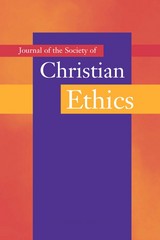
The Journal of the Society of Christian Ethics continues to be an essential resource for students and faculty pursuing the latest developments in Christian and religious ethics, publishing refereed scholarly articles on a variety of topics. The Journal also contains book reviews of the latest scholarship in the field.
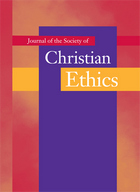
The Journal of the Society of Christian Ethics continues to be an essential resource for students and faculty pursuing the latest developments in Christian and religious ethics, publishing refereed scholarly articles on a variety of topics. The Journal also contains book reviews of the latest scholarship in the field.
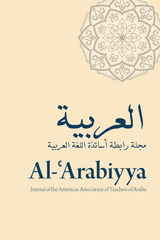
The Journal of the Society of Christian Ethics continues to be an essential resource for students and faculty pursuing the latest developments in Christian and religious ethics, publishing refereed scholarly articles on a variety of topics. The Journal also contains book reviews of the latest scholarship in the field.
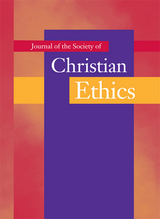
The Journal of the Society of Christian Ethics continues to be an essential resource for students and faculty pursuing the latest developments in Christian and religious ethics, publishing refereed scholarly articles on a variety of topics. The Journal also contains book reviews of the latest scholarship in the field.
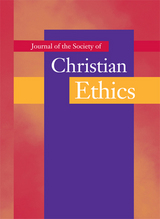
The Journal of the Society of Christian Ethics continues to be an essential resource for students and faculty pursuing the latest developments in Christian and religious ethics, publishing refereed scholarly articles on a variety of topics. The Journal also contains book reviews of the latest scholarship in the field.

The Journal of the Society of Christian Ethics continues to be an essential resource for students and faculty pursuing the latest developments in Christian and religious ethics, publishing refereed scholarly articles--a preeminent source for further research. The Journal also contains book reviews of the latest scholarship available.
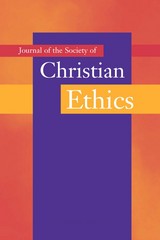
The Journal of the Society of Christian Ethics continues to be an essential resource for students and faculty pursuing the latest developments in Christian and religious ethics, publishing refereed scholarly articles on a variety of topics. The Journal also contains book reviews of the latest scholarship in the field.
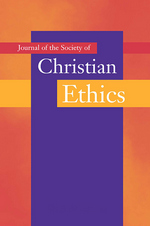
The Journal of the Society of Christian Ethics continues to be an essential resource for students and faculty pursuing the latest developments in Christian and religious ethics, publishing refereed scholarly articles—a preeminent source for further research. The Journal also contains book reviews of the latest scholarship available.



Formerly known as The Annual of the Society of Christian Ethics, it will now bear the official title: Journal of the Society of Christian Ethics. Instead of appearing as an annual, the Journal will appear twice a year—in the spring and in the fall. The Journal will continue to be an essential resource for students and faculty pursuing the latest developments in Christian and religious ethics, publishing refereed scholarly articles as well as a professional resources section on teaching and scholarship in ethics—a preeminent source for further research.

The Journal of the Society of Christian Ethics is an essential resource for students, faculty, and scholars in search of the latest developments and thinking in Christian and religious ethics.

The Journal of the Society of Christian Ethics continues to be an essential resource for students, faculty, and scholars in search of the latest developments, thinking, and issues in the world of Christian and religious ethics.

The Journal of the Society of Christian Ethics continues to be an essential resource for students and faculty pursuing the latest developments in Christian and religious ethics, publishing refereed scholarly articles as well as a professional resource section on teaching and scholarship in ethics—a preeminent source for further research. The Journal also contains book reviews of the latest scholarship available.

The Journal of the Society of Christian Ethics continues to be an essential resource for students and faculty pursuing the latest developments in Christian and religious ethics, publishing refereed scholarly articles—a preeminent source for further research. The Journal also contains book reviews of the latest scholarship in the field.

The Journal of the Society of Christian Ethics continues to be an essential resource for students and faculty pursuing the latest developments in Christian and religious ethics, publishing refereed scholarly articles as well as a professional resources section on teaching and scholarship in ethics—a preeminent source for further research. The Journal also contains book reviews of the latest scholarship available.

The Journal of the Society of Christian Ethics continues to be an essential resource for students and faculty pursuing the latest developments in Christian and religious ethics, publishing refereed scholarly articles on a variety of topics. The Journal also contains book reviews of the latest scholarship in the field.
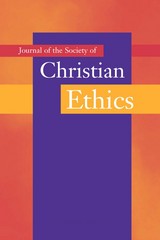
The Journal of the Society of Christian Ethics continues to be an essential resource for students and faculty pursuing the latest developments in Christian and religious ethics, publishing refereed scholarly articles on a variety of topics. The Journal also contains book reviews of the latest scholarship in the field.
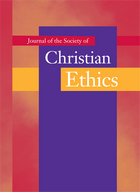
The Journal of the Society of Christian Ethics continues to be an essential resource for students and faculty pursuing the latest developments in Christian and religious ethics, publishing refereed scholarly articles on a variety of topics. The Journal also contains book reviews of the latest scholarship in the field.
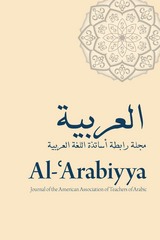
The Journal of the Society of Christian Ethics continues to be an essential resource for students and faculty pursuing the latest developments in Christian and religious ethics, publishing refereed scholarly articles on a variety of topics. The Journal also contains book reviews of the latest scholarship in the field.


The Journal of the Society of Christian Ethics continues to be an essential resource for students and faculty pursuing the latest developments in Christian and religious ethics, publishing refereed scholarly articles-a preeminent source for further research. The Journal also contains book reviews of the latest scholarship available.

The Journal of the Society of Christian Ethics continues to be an essential resource for students and faculty pursuing the latest developments in Christian and religious ethics, publishing refereed scholarly articles — a preeminent source for further research. The Journal also contains book reviews of the latest scholarship available.

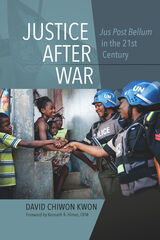
READERS
Browse our collection.
PUBLISHERS
See BiblioVault's publisher services.
STUDENT SERVICES
Files for college accessibility offices.
UChicago Accessibility Resources
home | accessibility | search | about | contact us
BiblioVault ® 2001 - 2024
The University of Chicago Press









